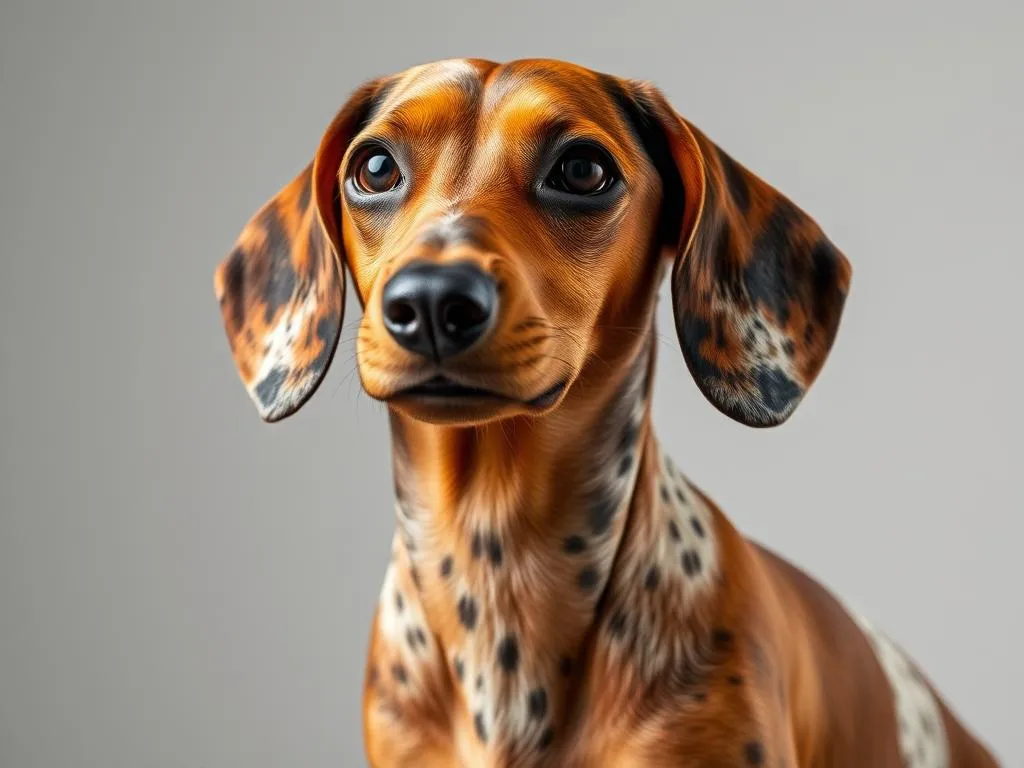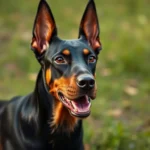
Introduction
Overview of Dog Breeds
Dog breeds are distinct groups of domestic dogs that have been selectively bred for specific traits, such as appearance, behavior, and working abilities. Each breed has its unique characteristics, making them suitable for various lifestyles and purposes, from companionship to herding and hunting. Understanding different dog breeds is crucial for potential dog owners as it helps them choose a breed that fits their lifestyle, preferences, and living situation.
Introduction to the Dachshund
The Dachshund, often affectionately known as the “wiener dog,” originated in Germany and was initially bred for hunting small game, particularly badgers and rabbits. This breed’s popularity has surged over the years, thanks to its distinct appearance, playful personality, and loyalty to its family. Dachshunds come in various coat types and color patterns, making them appealing to a wide range of dog lovers.
Purpose of the Article
In this article, we will focus on the red dapple dachshund, a stunning variation of the Dachshund breed. We will explore its unique characteristics, care requirements, health considerations, and much more. Readers can expect to gain a comprehensive understanding of this beautiful breed, making it easier to determine if the red dapple dachshund is the right fit for their home.
Understanding the Dachshund Breed
History and Origin
The Dachshund has a rich history that dates back to 15th century Germany. Initially, these dogs were created to hunt burrowing animals, thanks to their elongated bodies and keen sense of smell. The name “Dachshund” translates to “badger dog” in German, reflecting its original purpose. Over the years, the breed evolved, gaining popularity as both a hunting companion and a loyal family pet.
Characteristics of the Dachshund
Dachshunds are known for their distinctive physical traits, including their long bodies, short legs, and large, expressive eyes. They typically come in three coat types: smooth, long-haired, and wire-haired, each offering a unique look and grooming requirement.
- Size: Dachshunds are small dogs, generally weighing between 16 to 32 pounds, with a height of 8 to 9 inches at the shoulder.
- Temperament: They are known for their playful and curious nature, often displaying a bold personality. Dachshunds are loyal, affectionate, and can be quite stubborn at times.
- Lifespan: The average lifespan of a Dachshund is around 12 to 16 years, but like all breeds, they are prone to certain health issues, which we will explore later.
The Red Dapple Dachshund
What is a Red Dapple Dachshund?
The red dapple dachshund is a variation of the standard Dachshund that features a unique coat pattern. The term “dapple” refers to the mottled or spotted appearance on the coat, which is caused by a specific genetic factor. This pattern can appear in various colors, but in the case of the red dapple Dachshund, the base color is a rich red, complemented by lighter, dappled spots that can range from cream to white.
Physical Characteristics
A red dapple dachshund maintains the same size and weight specifications as other Dachshunds, usually falling within the range of 16 to 32 pounds.
Some distinctive features include:
– Color Pattern: The striking red dapple pattern creates a beautiful contrast against the solid red base, making these dogs particularly eye-catching.
– Coat Type: Depending on the individual dog, the coat may be smooth, long-haired, or wire-haired, each requiring different grooming techniques.
Personality and Temperament
Much like other Dachshunds, red dapple dachshunds exhibit a variety of personality traits. They are known for being:
– Playful and Energetic: They enjoy playtime and can be quite lively.
– Intelligent: Their intelligence allows them to learn quickly, but they can also be independent thinkers.
– Affectionate: They form strong bonds with their families and often seek companionship.
When compared to other Dachshund variations, the red dapple dachshund may display slightly more spirited behavior, thanks to their playful nature.
Caring for a Red Dapple Dachshund
Nutrition and Diet
To keep a red dapple dachshund healthy, it’s essential to provide a balanced diet tailored to their age, size, and activity level. High-quality dog food, whether commercial or homemade, should feature a good balance of protein, fats, and carbohydrates. Some dietary considerations include:
– Portion Control: Dachshunds are prone to obesity, so it’s crucial to monitor their food intake.
– Nutritional Needs: Look for dog food that lists meat as the first ingredient, and avoid fillers like corn and soy.
Grooming Needs
Grooming requirements for a red dapple dachshund depend on its coat type:
– Smooth Coat: Requires minimal grooming, with occasional brushing to remove loose hair.
– Long-Haired: Needs more frequent brushing to prevent mats and tangles.
– Wire-Haired: Requires stripping to maintain its unique appearance and texture.
Regular grooming not only keeps your dog looking great but also promotes healthy skin and fur.
Exercise Requirements
Dachshunds, including red dapple dachshunds, require regular exercise to maintain their physical and mental health. Daily activities should include:
– Walks: A minimum of 30 minutes to an hour of walking is ideal.
– Playtime: Interactive games like fetch or tug-of-war can help burn off excess energy.
– Mental Stimulation: Puzzle toys and training sessions can keep their minds sharp and engaged.
Health Considerations for Dachshunds
Common Health Issues
Like all breeds, Dachshunds are susceptible to specific health problems. Common issues include:
– Intervertebral Disc Disease (IVDD): Due to their long spine and short legs, Dachshunds can suffer from back problems.
– Obesity: This breed is prone to weight gain, which can exacerbate health issues.
– Dental Problems: Regular dental care is essential to prevent tooth decay and gum disease.
For red dapple dachshunds, there may be additional concerns related to their unique coloring, such as skin sensitivities.
Preventative Care
Regular veterinary check-ups are crucial for maintaining a healthy red dapple dachshund. Key components of preventative care include:
– Vaccinations: Keeping up with vaccinations can protect against various diseases.
– Flea and Tick Prevention: Regular treatments can prevent infestations and related diseases.
– Spaying/Neutering: This can prevent certain health issues and unwanted behaviors.
Lifespan and Aging
The average lifespan of a red dapple dachshund is typically between 12 and 16 years. As your dog ages, consider:
– Senior Diets: Switching to a senior dog food formula can help address changing nutritional needs.
– Regular Vet Visits: More frequent visits may be necessary to monitor health as they age.
– Comfort: Providing orthopedic bedding can help ease joint discomfort.
Training a Red Dapple Dachshund
Training Basics
Early socialization and training are essential for a well-adjusted red dapple dachshund. Training should focus on:
– Basic Commands: Teaching commands like sit, stay, and come can foster good behavior.
– Socialization: Exposing them to various people, animals, and environments is crucial for reducing anxiety and fearfulness.
Behavioral Issues
Dachshunds can exhibit behavioral challenges, such as:
– Barking: They are known to be vocal, which can be managed through training.
– Stubbornness: Patience and consistency are key when training a red dapple dachshund.
Solutions to these issues include:
– Positive Reinforcement: Rewarding good behavior encourages repeat actions.
– Consistent Routines: Establishing a routine can help your dog feel secure and understand expectations.
Fun Activities and Tricks
Engaging activities can help stimulate both the mind and body of a red dapple dachshund. Some fun options include:
– Agility Training: This helps build confidence and provides physical exercise.
– Teaching Tricks: Simple tricks like rolling over or playing dead can be enjoyable and rewarding for both the dog and owner.
Finding the Right Red Dapple Dachshund
Adoption vs. Breeding
When considering a red dapple dachshund, potential owners can choose between adopting from shelters or purchasing from breeders. Each option has its pros and cons:
– Adoption: Often more affordable and saves a dog’s life, but may come with unknown health histories.
– Breeding: Allows you to select specific traits, but it’s essential to choose responsible breeders.
What to Look for in a Breeder
If you decide to go the breeding route, ensure you find a reputable breeder. Key questions to ask include:
– Health Testing: Inquire about the health screenings performed on the parents.
– Socialization Practices: Ask how the puppies are raised and socialized before going to new homes.
Signs of a responsible breeding operation include:
– Clean Facilities: A well-maintained environment indicates care and attention to the dogs’ well-being.
– Willingness to Answer Questions: A good breeder should be knowledgeable and open about their breeding practices.
Conclusion
Recap of Key Points
In summary, the red dapple dachshund is a unique and charming variation of the Dachshund breed. With its striking appearance, playful temperament, and loyal nature, it can make a wonderful addition to any family. Understanding its care requirements, health considerations, and training needs is essential for providing a fulfilling life for your dog.
Final Thoughts
If you are considering adding a red dapple dachshund to your family, take the time to research and ensure that you can meet its needs. Remember, responsible dog ownership includes commitment, love, and understanding for your furry companion.
By exploring various aspects of this breed, potential owners can make informed decisions and embrace the joys of Dachshund ownership.









